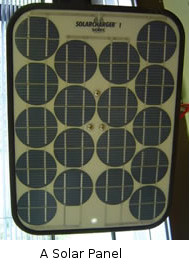Abstract
 A solar panel is used to power a small fan and investigate the properties of solar panels.
A solar panel is used to power a small fan and investigate the properties of solar panels.
Portable
Yes
Principles Illustrated
 Generation of electricity using photons of light to promote electrons to higher energy states. We have a range of solar panels. Investigations can include for example the dependence of voltage, current, and power on to the sunlight, impedance matching, light concentration, and light intensity.
Generation of electricity using photons of light to promote electrons to higher energy states. We have a range of solar panels. Investigations can include for example the dependence of voltage, current, and power on to the sunlight, impedance matching, light concentration, and light intensity.
NCEA & Science Curriculum
Related to PHYS 3.5.
Instructions
For a simple demonstration, turn on the “sun”, a photographer’s light, and watch the motor spin. More sophisticated activities can begin with impedance matching (finding the load resistance that maximizes power delivery to the load) and continue with intensity and angle dependence. Qualitative study of temperature dependence is very easy to set up: Turn the lamp on, measure the power output, wait perhaps 15 min for the solar panel to warm up, and measure the power delivered again. It will be lower.
Safety
Large solar panels can generate high voltages and substantial power. We recommend using a low voltage, low power solar panel to illustrate the principles. The fan should either be sufficiently small that it cannot cause injury or it should be enclosed.
Individual teachers are responsible for safety in their own classes. Even familiar demonstrations should be practised and safety-checked by individual teachers before they are used in a classroom.
Related Resources
Teaching Resources
Would you like to contribute lesson suggestions? Contact us.
Credits
This teaching resource was developed with support from
The MacDiarmid Institute
Faculty of Science, Victoria University of Wellington
School of Chemical and Physical Sciences, Victoria University of Wellington